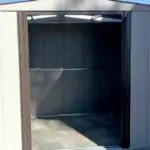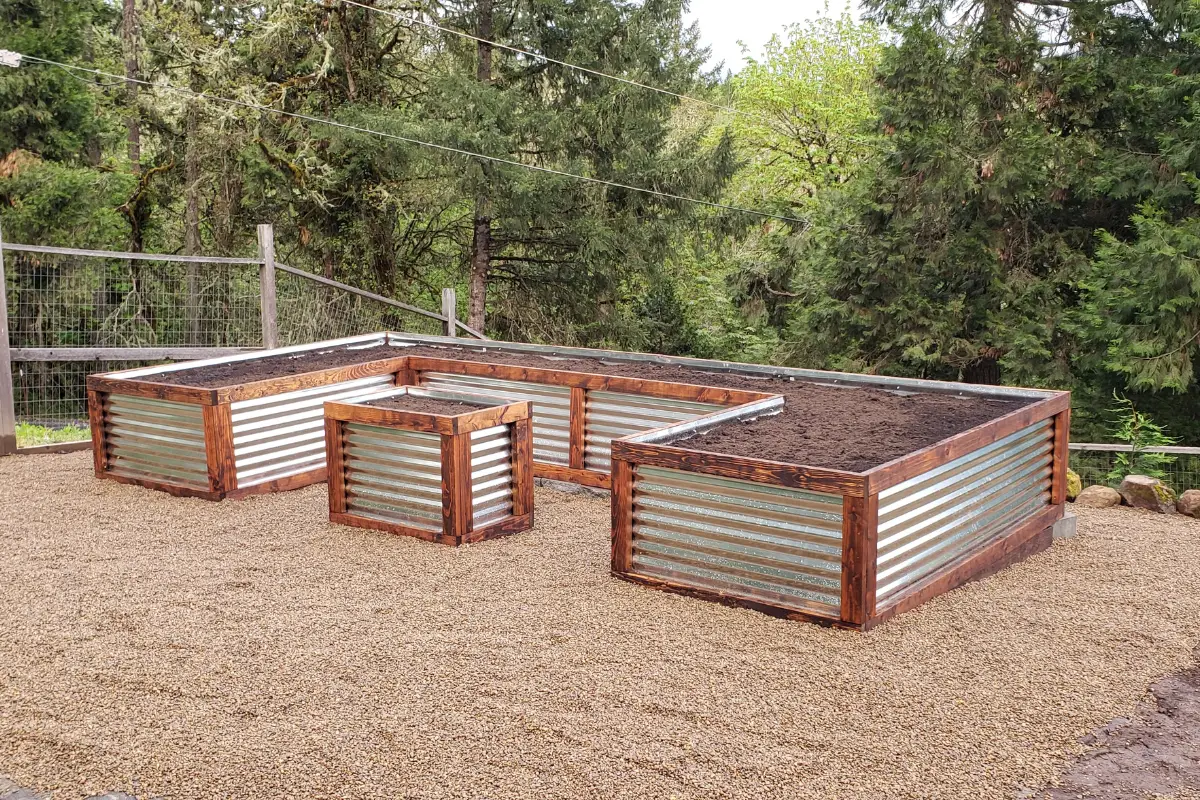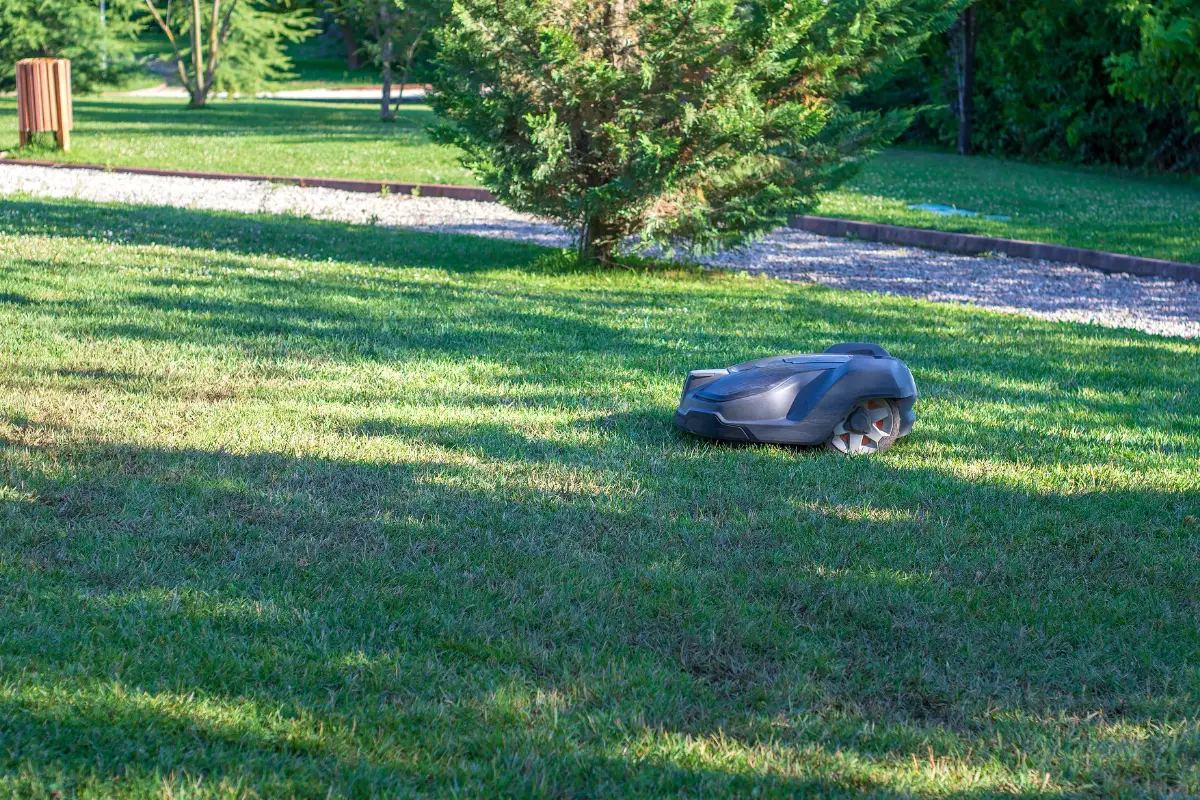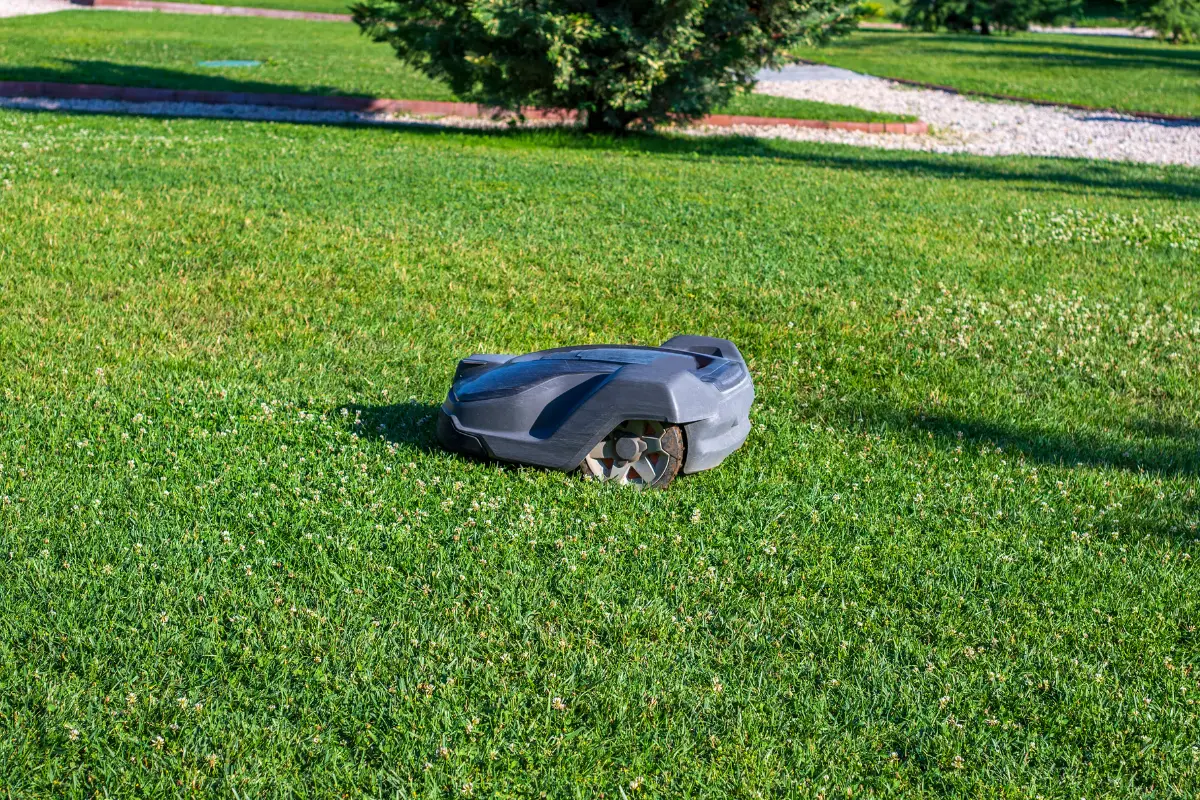If you have a metal shed on your property, you’ll want to keep it from rusting. Adding paint, Galvanized Steel, and insulation all help. You’ll also want to add a dehumidifier and repair any leaks. Water causes metal to rust, so you want your shed to stay as dry as possible all year round.
Rust is a real problem for metal sheds. If you want yours to last, you’ll need to take steps to keep the rust away. Rust ruins the structural integrity of sheds, so you should get started as soon as you’re able.
Is Metal the best material for sheds? Find out Pros and Cons here…
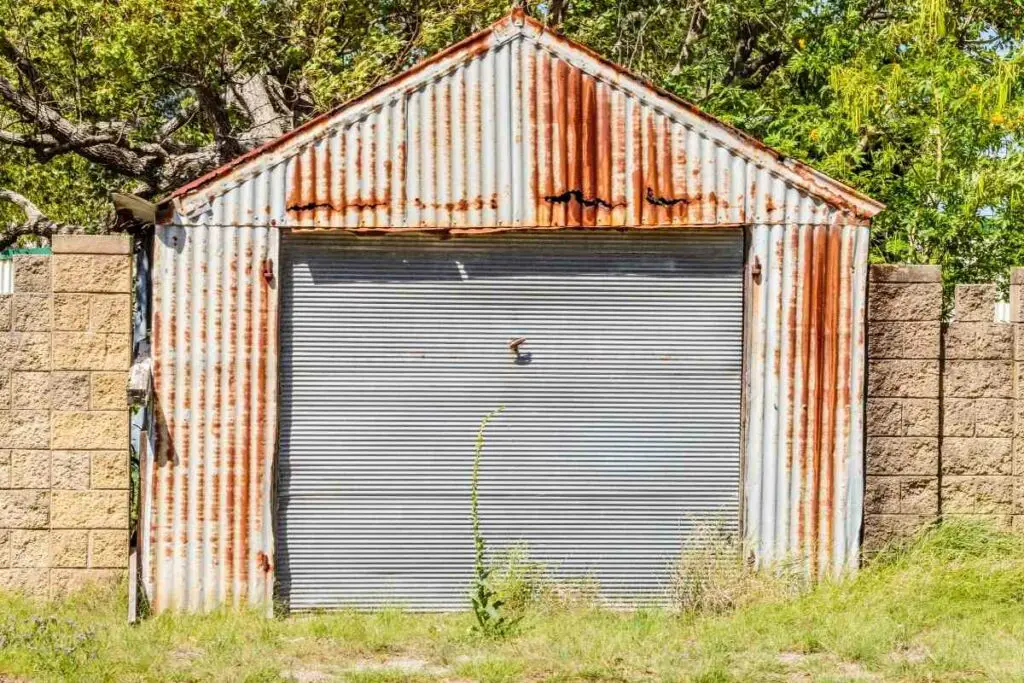
Table of Contents
Why Do Sheds Need Paint?
You must add paint to your metal shed. Paint helps to keep moisture from reaching the metal. If you want to protect your shed from rust, your best option would be to choose an anti-corrosion paint.
On top of that, you’ll want to add an anti-corrosion coating. This type of finish creates a stronger seal to keep out water. To give your metal shed the most protection, you should also repaint it every two years or so.
If you live in an area with a lot of moisture and humidity, painting the shed more frequently than that would be ideal.
To summarize, metal sheds need a coating of paint to help prevent moisture from reaching the steel. If water does come into contact with it, this could lead to corrosion over time.
What Should You Replace With Galvanized Steel?
If there are any weak areas on your metal shed, you’ll need to replace them with Galvanized steel. This type of metal has a protective zinc coating that resists rust.
Upgrading corroded areas to Galvanized steel will prevent you from having to replace them again anytime soon. The zinc coating lasts a lot longer than paint or anti-corrosion sealant. Plus, these areas often have more exposure to water and need more substantial materials to resist rust.
However, you’ll need to take care of the Galvanized steel well. The zinc can scratch off, allowing moisture to enter the metal.
Overall, consider replacing specific sections of your shed if you can. Most metal sheds have one or two problem areas that could greatly benefit from another layer of protection.
Prices pulled from the Amazon Product Advertising API on:
Product prices and availability are accurate as of the date/time indicated and are subject to change. Any price and availability information displayed on [relevant Amazon Site(s), as applicable] at the time of purchase will apply to the purchase of this product.
Galvanized steel made by the company Wall Control can come in a range of colors, so no need for paint. This stronger metal is an amazing upgrade to your tired-looking shed.
Where To Find and Repair Leaks?
You’ll want to inspect your metal shed next time it rains. Most leaks occur in the roof or where there are seams in materials. Adding a gutter can help carry water away safely.
If you notice any leaks in your shed, make sure to plug them up immediately. All of that moisture entering the building is sure to cause problems!
Once you’ve temporarily stopped the leaking, you should buy metal roofing cement. The cement can come in plenty of colors, allowing you to find the perfect match for your shed. Plus, they’re often found in kits, making it easy to patch up your roof.
If the leaking is severe, you may need to replace the roof. It would be best to spend more on a Galvanized steel roof when you do. Rusting won’t be as much of a problem, and you won’t need to buy another top soon- making it more worth your money.
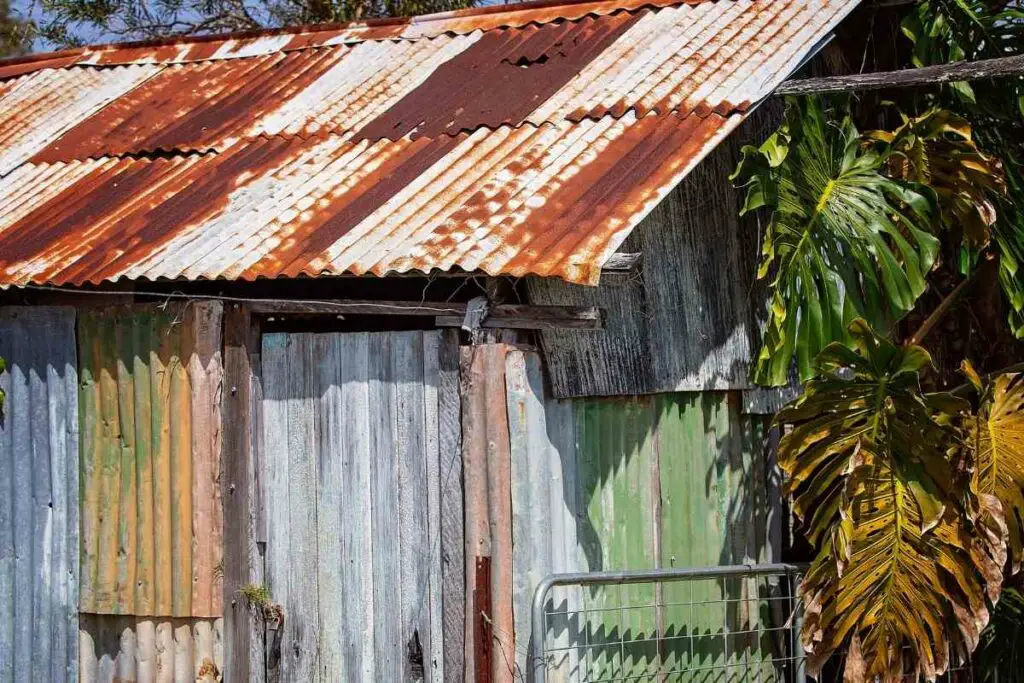
Why Should You Add More Insulation?
Metal sheds need insulation, even if you live in a warmer area. Additional insulation can prevent moisture from entering the structure and keep the inside safe from corrosion.
Sheds also have issues with condensation, which can cause damage to the interior sections of your building. Insulation reduces condensation significantly by reducing fluctuations in temperature inside of the shed.
Overall, your metal shed should always have a quality layer of insulation. If it doesn’t have one now, it’s not too late to add your own! Sheds are usually small, so it should be cost-efficient to buy the required supplies.
Why Use a Dehumidifier Inside a Metal Shed?
Finally, you should add a dehumidifier to the inside of your metal shed, especially during rainy and humid seasons. Dehumidifiers reduce moisture inside the shed, which prevents rust from forming.
Dehumidifiers are also great for enhancing airflow, keeping the shed more comfortable for you. Plus, you’ll likely only need a small one to cover the amount of space inside a shed.
Prices pulled from the Amazon Product Advertising API on:
Product prices and availability are accurate as of the date/time indicated and are subject to change. Any price and availability information displayed on [relevant Amazon Site(s), as applicable] at the time of purchase will apply to the purchase of this product.
What If Your Metal Shed Has Rust Already?
If your metal shed has rust on it already, you’ll want to start fixing it as soon as you notice. The longer you leave the rust alone, the more the corrosion will spread and cause damage.
Luckily, it is possible to restore rusty metal. You’ll need a rust reformer- a primer that alters rusty metals into a new surface. Once you spray the area with the rust reformer and give it ample time to dry, you can paint over it again.
After your final coat of paint, you should seal the metal with an anti-corrosion finish. That way, the rust won’t be able to come back.
As long as it’s not a lot of rust, it’s an easy fix! You may also be able to replace certain rusted sections of the shed with new pieces of metal. Since sheds are small structures, many people can complete DIY projects like these in a single weekend.
Can You Remove Rust From Metal?
You can also remove rust from metal if it’s in a small section. You can follow these steps:
- Apply baking soda to the rusted areas
- Allow the baking soda to rest for more than an hour
- Use a piece of steel wool to scrape off the rust
- Keep scraping until the metal is clean and you can’t see any more rust
- Rinse off the rust and baking soda
- Dry the area thoroughly with a towel
Always make sure to wear goggles when removing rust from metal- you wouldn’t want to get any in your eye. It’s also essential to dispose of the rust properly when finished scraping to prevent it from entering the water.
Finally, after following the above steps, make sure to add paint or an anti-corrosion finish to the metal! If you don’t, the rust can just come back.











